One of the most treasured religious sites in the world, Angkor Wat and the many other temples of Angkor are a true wonder. An essential part of any Cambodia itinerary, Angkor captivates visitors with its jaw-dropping beauty and incredibly preserved cultural heritage. With far more to see here than you might expect, the challenge of a visit to Angkor is working out how best to experience it all.
It’s entirely possible to spend a complete day, from sunrise to sunset, exploring Angkor without running out of temples to see. With so many possibilities, it’s best to go prepared, knowing exactly what to see and how to get around. Our ultimate guide to Angkor Wat provides all the information you need to see the best of Angkor Wat in a day and make your trip a complete success.
Brief Background on Angkor Wat
For a better idea of what makes Angkor Wat such an important and spellbinding place to visit, it helps to know a little about its history. Once you learn a little about Angkor and the heritage of its temples and cities, the sights there will be even more impressive and memorable to you.
Where Is Angkor Wat?
Angkor Wat is in northwestern Cambodia, just outside the city of Siem Reap, in the ancient city of Angkor (once known as Yaśodharapura).
What Is Angkor Wat?
Angkor Wat is a temple originally built to the Hindu god Vishnu as King Suryavarman II’s state temple and then his mausoleum. It was later converted to a Buddhist temple.
However, Angkor Wat is simply one of the temples within the Angkor Archaeological Park, which is home to hundreds of temples and spans 1,000 square kilometers (about 386 square miles). The entire Angkor site is on the UNESCO World Heritage List for its incredibly preserved remains and deep cultural history.
When Was Angkor Wat Built?
The city of Angkor was founded around the start of the 10th century, and each of its temples were built during different periods. Angkor Wat, specifically, was built in the first half of the 12th century, and many of the other famous Angkor temples were built afterward.
Who Built Angkor Wat?
The city of Angkor was first built by King Yasovarman I, while Angkor Wat itself was built by King Suryavarman II. Many of the other temples were built by his successor, King Jayavarman VII, who had the Bayon temple built inside the new capital, Angkor Thom. These kings were all rulers of the Khmer Empire. Covering modern Cambodia, Laos, Thailand, and parts of Vietnam, the empire reigned from the ninth to 15th century.
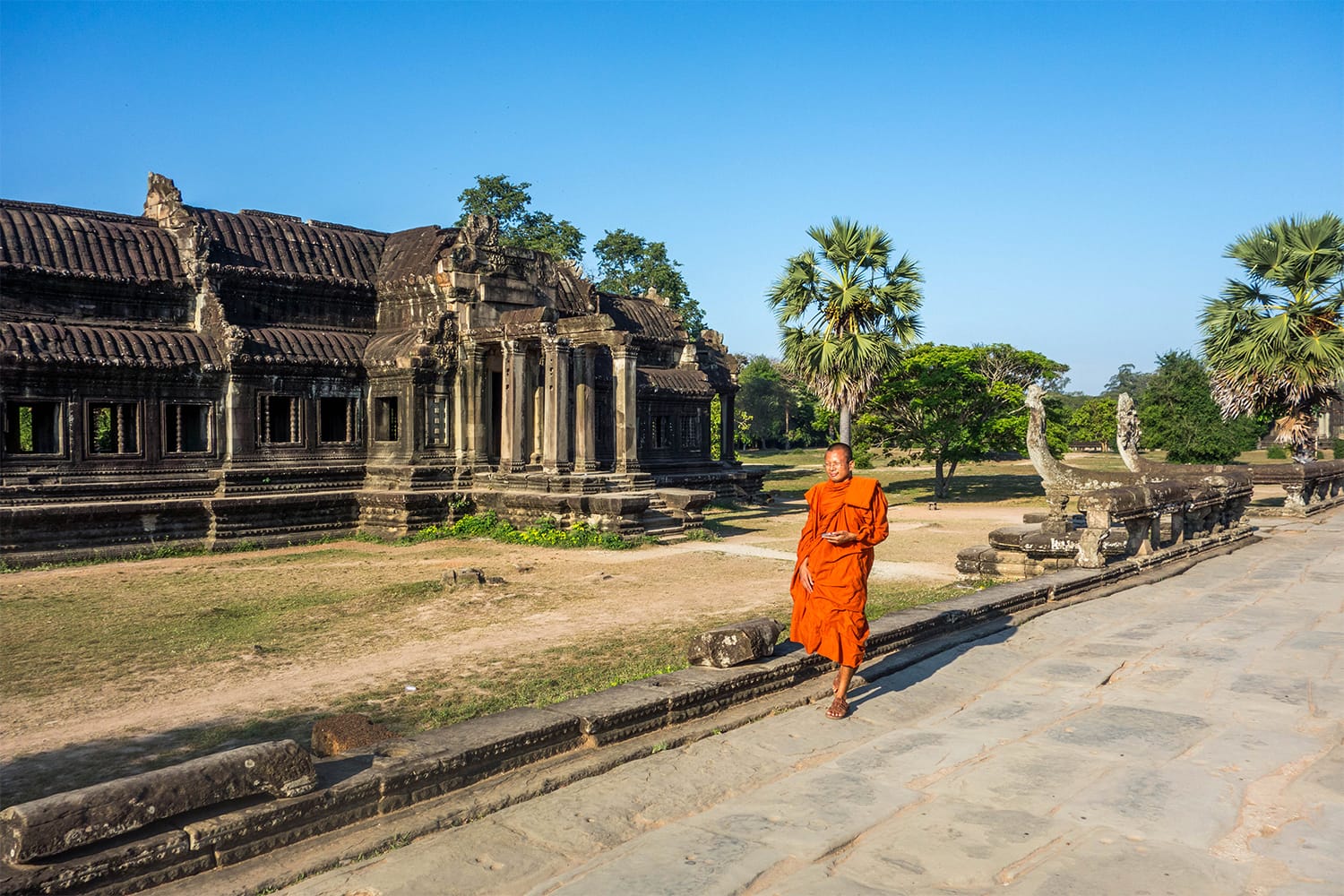
How to Get to Angkor Wat
Located just outside the city of Siem Reap in Cambodia’s northwest, Angkor Wat is an established stop on the tourist trail through Southeast Asia. As Cambodia’s most popular destination, it’s one of the easiest places to get to in the country. Whether you want to know how to get from Bangkok to Angkor Wat or from somewhere closer in Cambodia, we’ve got you covered.
The most direct way to reach Siem Reap and Angkor Wat is through Siem Reap International Airport outside the city. Most full-service and budget Asian airlines have at least a few connections to Siem Reap from a lot of major Asian cities. You can also take domestic flights from Phnom Penh and Sihanoukville.
Your other option for traveling to Angkor Wat is to go by land, which means by bus or private transfer. Essentially a taxi service, the private transfer is a car, van, or minibus that takes you to Angkor Wat from Phnom Penh or Bangkok. These transfers are the most expensive option but also likely to be the most comfortable and private. The bus is more affordable, whether from Bangkok, Phnom Penh, or a smaller city like Battambang.
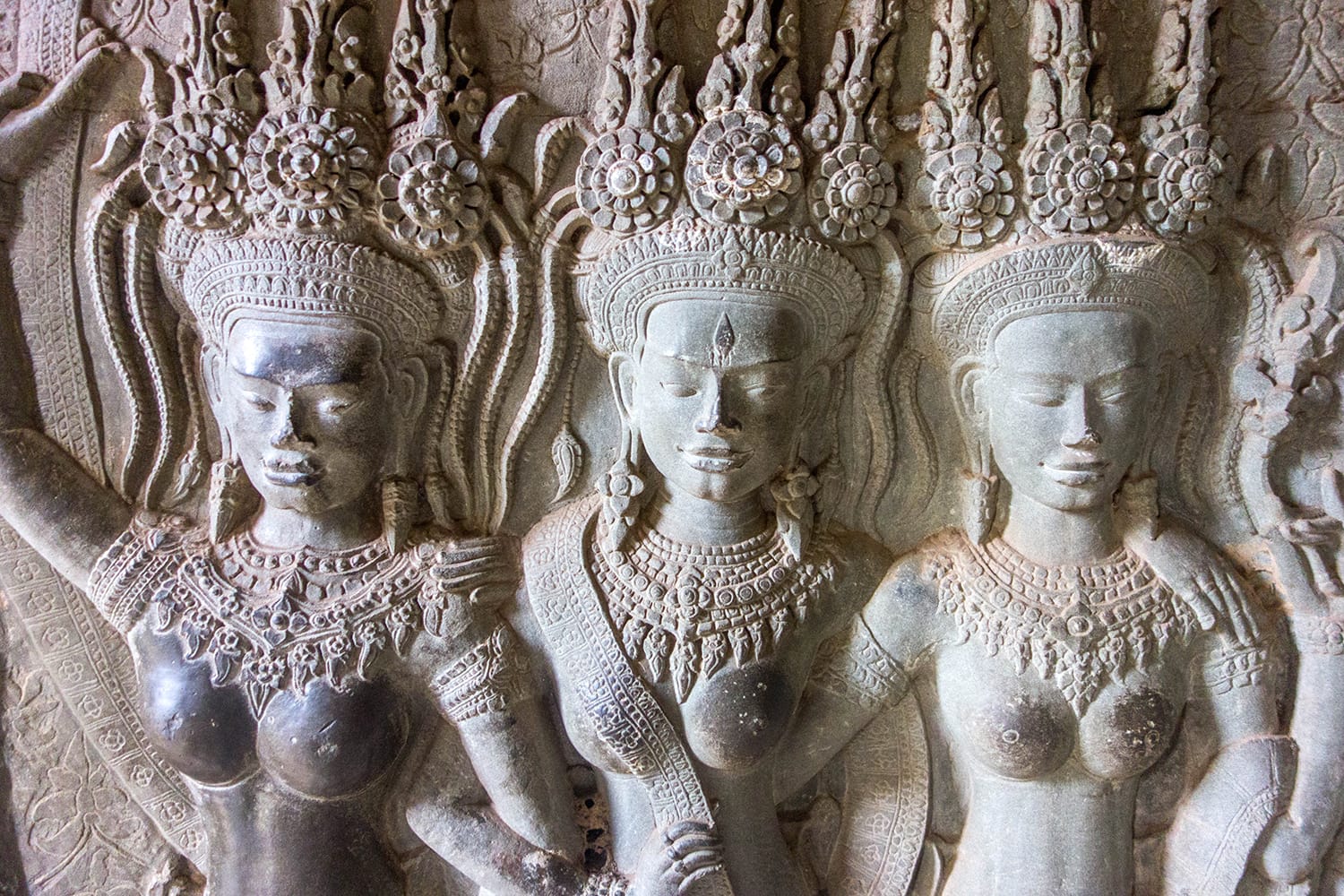
How Long It Takes to Visit Angkor Wat
A key consideration in planning a trip to Angkor Wat (or anywhere, really) is how long you need to visit. There’s nothing worse than realizing you didn’t book enough time (or booked too much) in a destination.
This can be a tough question for an Angkor Wat trip, as it depends on how you want to get around and how many of the hundreds of temples you want to see. It’s possible to see quite a lot of the Angkor complex in a single day, including the best-known highlights. But two days is even better, letting you vary how you get around, venture to the farther temples, or take it easy. Unless you plan to see some of Siem Reap’s other attractions nearby, such as Tonlé Sap Lake, or tick off every single temple, three days is probably not necessary.
Most of the temples are open daily from 7:30 a.m. to 5:30 p.m., so you can fit a lot of sightseeing into your one day. The exceptions are Angkor Wat and Srah Srang, which open at 5:30 a.m. for sunrise, and Phnom Bakheng and Pre Rup, which are open from 5 a.m. to 7 p.m. for sunrise and sunset. The ticket office is open from 4:30 a.m. to 5:30 p.m.
Entrance Fee for Angkor Wat
There are three versions of the Angkor Pass. The one-day pass costs $37, the three-day pass $62, and the seven-day pass $72. The three-day and seven-day passes don’t need to be used on consecutive days and are valid for one week and one month, respectively.
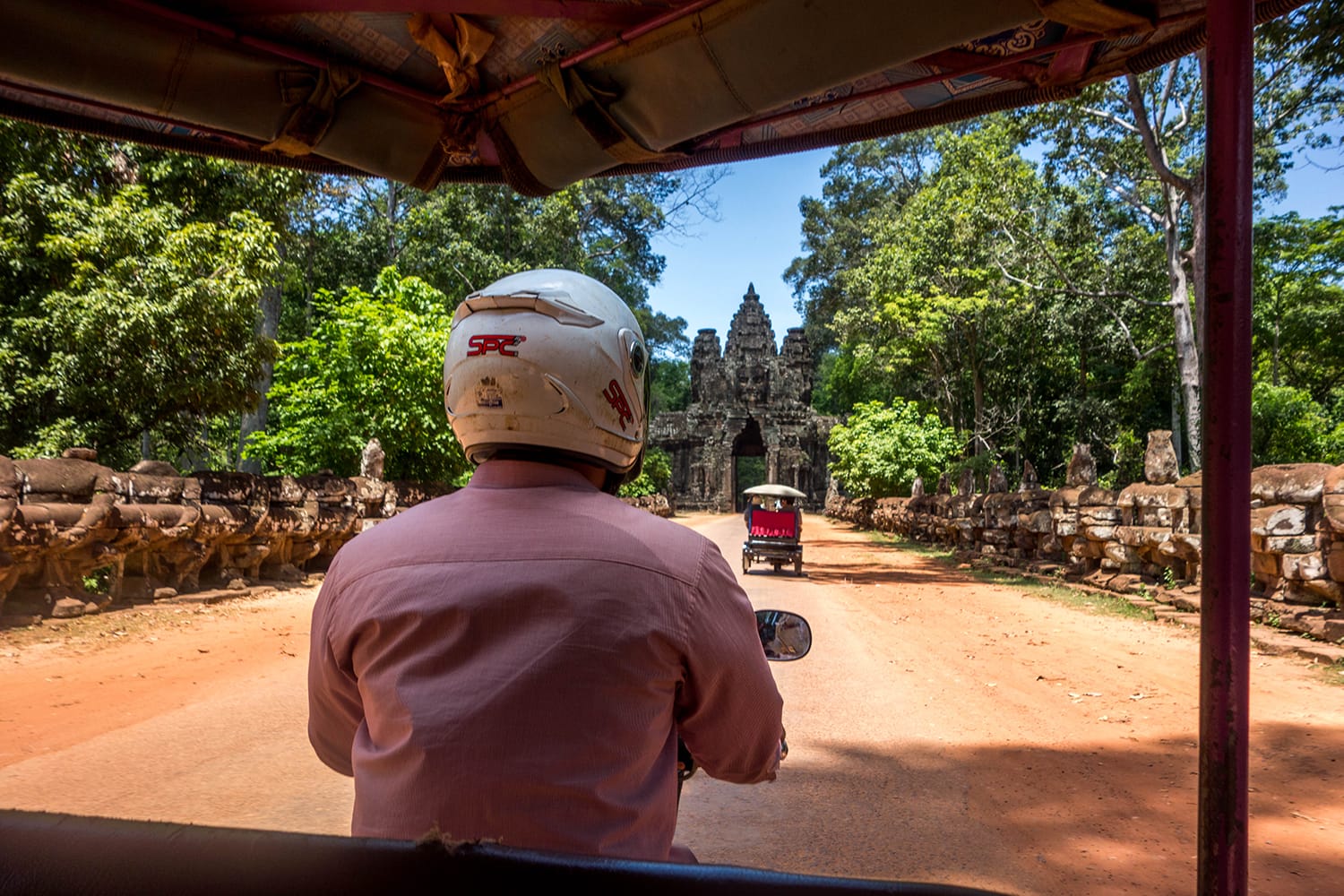
How to Get Around Angkor Wat
If you plan to visit Angkor Wat in one day, one of the biggest decisions you’ll have to make is how you’ll get around on that day. Angkor is huge, so walking from one temple to the next really isn’t feasible. You’ll do plenty of walking at each of the temples, not to mention climbing countless stairs.
You can get around Angkor by tour van, tuk-tuk, or bicycle. Unfortunately, foreigners are not allowed to ride a motorcycle or scooter inside the Angkor complex.
By Tour Van
As the most comfortable means of seeing Angkor, a tour van is also the most expensive option. Sitting inside an air-conditioned van, you’ll comfortably go from Siem Reap to Angkor and then from one temple to the next. A tour guide will explain the history behind each place you visit. The cost depends on whether you choose a private or shared tour and what the tour package includes.
Recommendation: If you want to visit Angkor Wat on a tour instead of on your own, we highly recommend this full-day sunrise tour. It’s a great value for the money, the tour guides are super knowledgeable and friendly, and you get to see all the best temples in Angkor.
By Tuk-Tuk
If transport is all you want, hiring a tuk-tuk for the day is a great way to see Angkor. The driver can take you from one temple to the next and wait while you explore them. This allows you to customize your visit as you go.
Sightseeing with a tuk-tuk offers a great balance between cost and convenience. Hiring one for the day should cost around $15-$20, depending on your negotiation skills.
By Bicycle
If you prefer to be active as you sightsee, consider renting a bicycle for the day. For a few dollars, you can pedal your way to Angkor from Siem Reap and go along the flat roads as you please. Although this is the cheapest option, it’s also the slowest and particularly tough in hot weather. Most importantly, we don’t recommend cycling through traffic in Siem Reap after sunset.
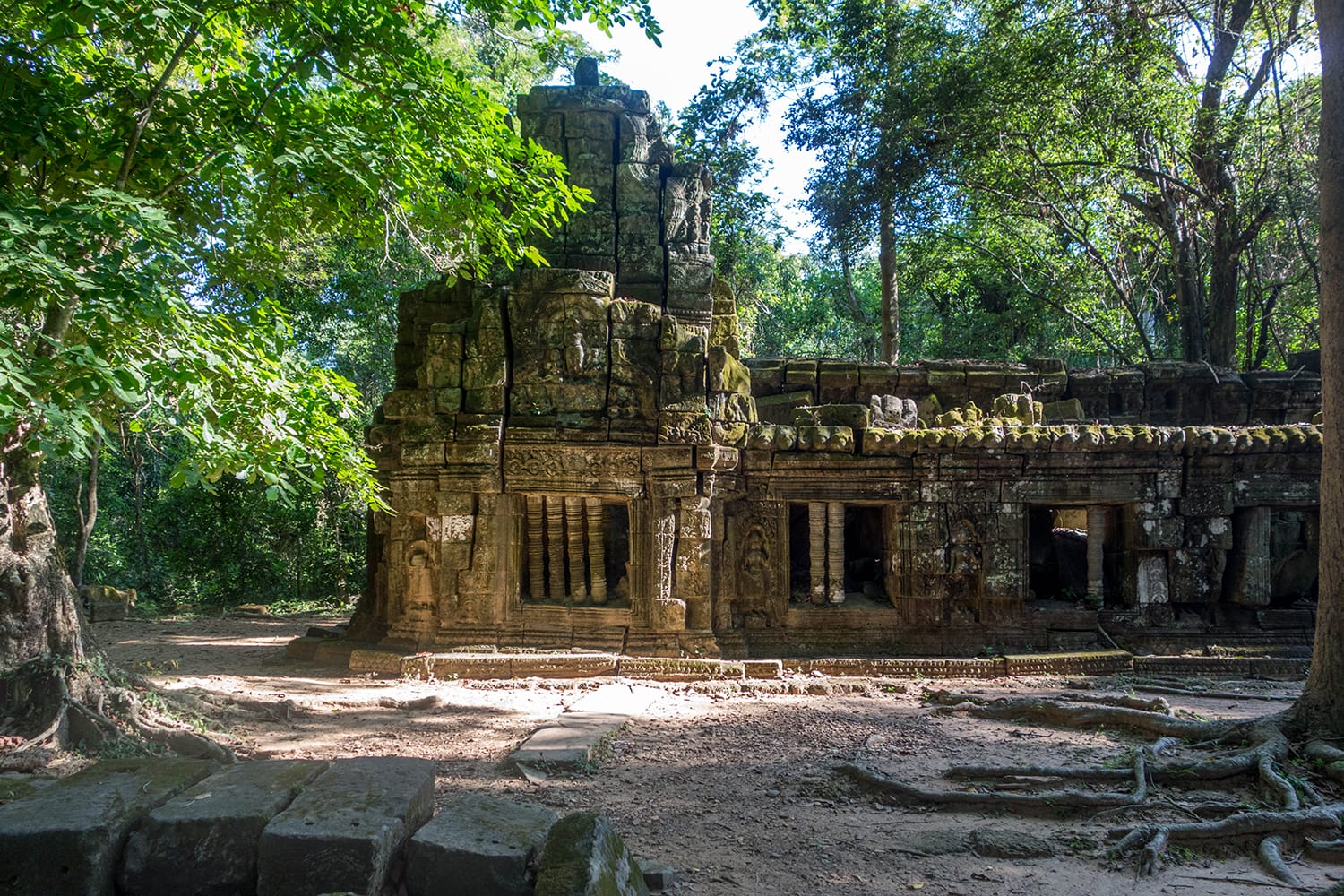
Best Time to Visit Angkor Wat
As a tropical Southeast Asian destination, Angkor doesn’t experience four seasons – more a pattern of dry and wet seasons. The temperature does vary throughout the area, going from mild and pleasant to hot and humid. Generally, the best time to visit Angkor is when the weather is both cool and dry, which means November through March. Naturally, this is also the high season for tourism in Angkor Wat and Siem Reap, so plan accordingly.
Outside of those months, you may have to deal with the heat, monsoon rains, or both. Angkor is hottest from April to June, which makes sightseeing in the early afternoon quite draining, especially by bicycle. The heavy rains from May through October shift from sudden downpours to more constant rain as the months go on, which aren’t the best sightseeing conditions either, especially on minor dirt roads. Visiting outside of peak season has its advantages, though, such as fewer tourists at the temples and more affordable rooms in Siem Reap.
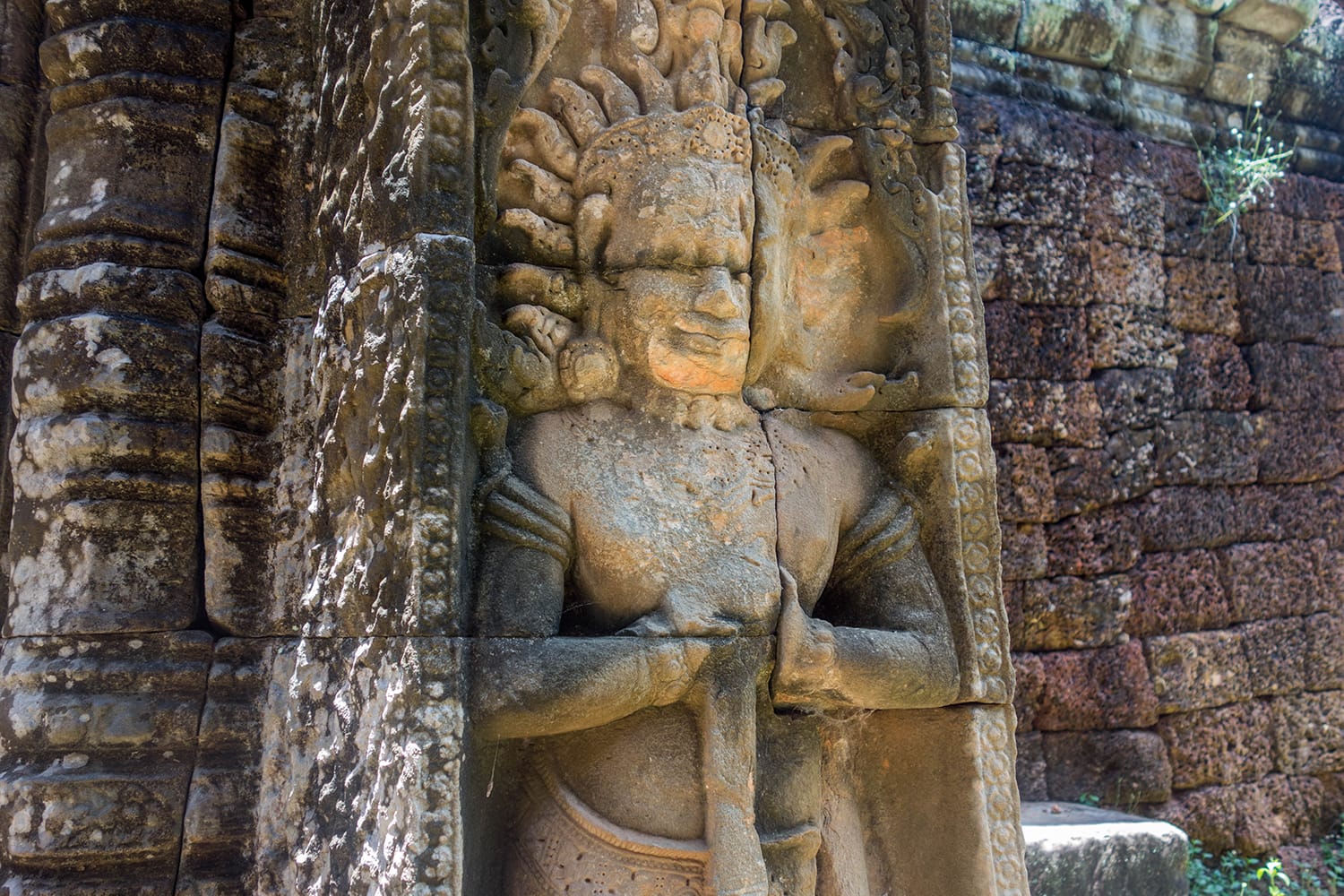
Where to Stay for Angkor Wat
There’s really only one area where you should look for places to stay near Angkor Wat – the nearby city of Siem Reap. This resort town is basically the gateway to Angkor and has grown as more tourists come to visit this wonder of the world. With the temples only 6 kilometers (about 3.7 miles) away from the city, you’ll have no problem finding a hostel or hotel in Siem Reap near Angkor Wat.
As for where to stay in Siem Reap, closer to the Old Market in the city center is better. You can also stay across the river, but you’ll likely want to be within walking distance of the central spots, such as Pub Street and the Night Market.
For true luxury, consider the five-star J7 Hotel, whose huge rooms are gorgeously appointed in wood. Besides excellent service, you get complimentary breakfast and a private balcony area here. All guests have access to the outdoor swimming pool, and some rooms even have private outdoor Jacuzzis.
It’s hard to find a better value for money in Siem Reap than Damrei Residence & Spa, a surprisingly affordable five-star hotel. The beautiful and spacious rooms, helpful staff, and complimentary breakfast provide a great experience. The swimming pool and the on-site bar and restaurant are just a bonus.
Just a short walk from Pub Street and the city center is Onederz Hostel, one of our favorite budget options in Siem Reap. Here you can enjoy clean and comfortable rooms, excellent service from the friendly staff, and an awesome rooftop pool where you can watch the sunset.
For more accommodation options near Angkor Wat, check out Booking.com. This site consistently offers the best rates, and its customer service is on point.
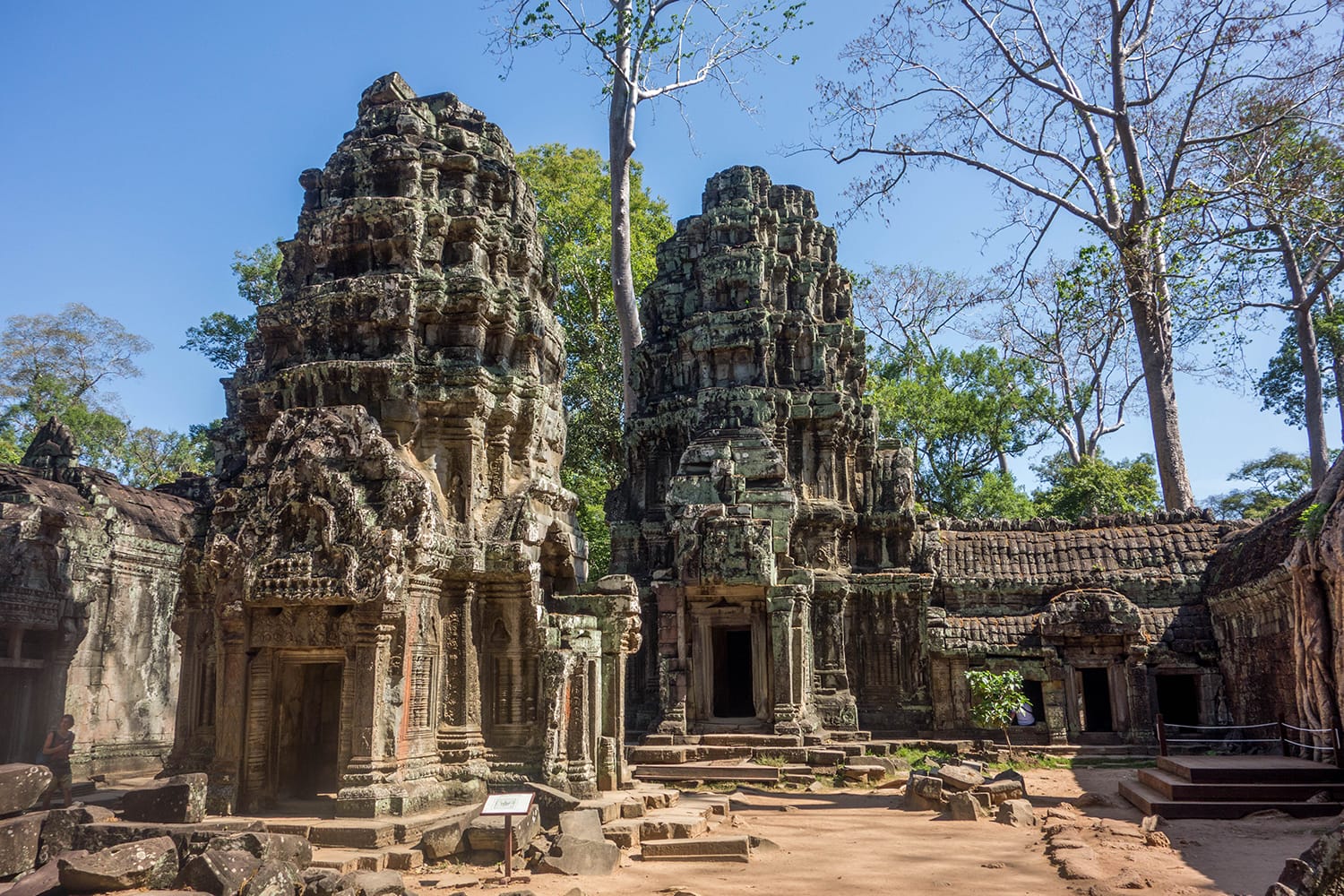
What to Bring With You to Angkor Wat
Since you’ll be out exploring Angkor all day, make sure to pack everything you might need for the day.
For starters, you’ll be doing a fair bit of walking and maybe cycling, so pack good shoes for being active. As you’ll be outdoors most of the time, a hat and sunscreen are crucial. Regardless of how hot it is, also bring plenty of water so you don’t have to keep finding places where you can buy it.
Also, while there is no malaria at Angkor, you should still bring mosquito repellent for protection against other diseases that mosquitoes spread, such as dengue fever. Oh, and don’t forget your camera!
Map of the Angkor Wat Complex
Tourists usually follow one of two routes around the Angkor Wat complex: the Small Circuit and the Grand Circuit. While both circuits take in highlights like Angkor Wat, Ta Prohm, and the Bayon, the Grand Circuit heads farther east and north. This 26-kilometer route takes in several other temples, most notably Preah Khan. Our Angkor Wat itinerary below includes all of the Small Circuit temples and two temples of the Grand Circuit.
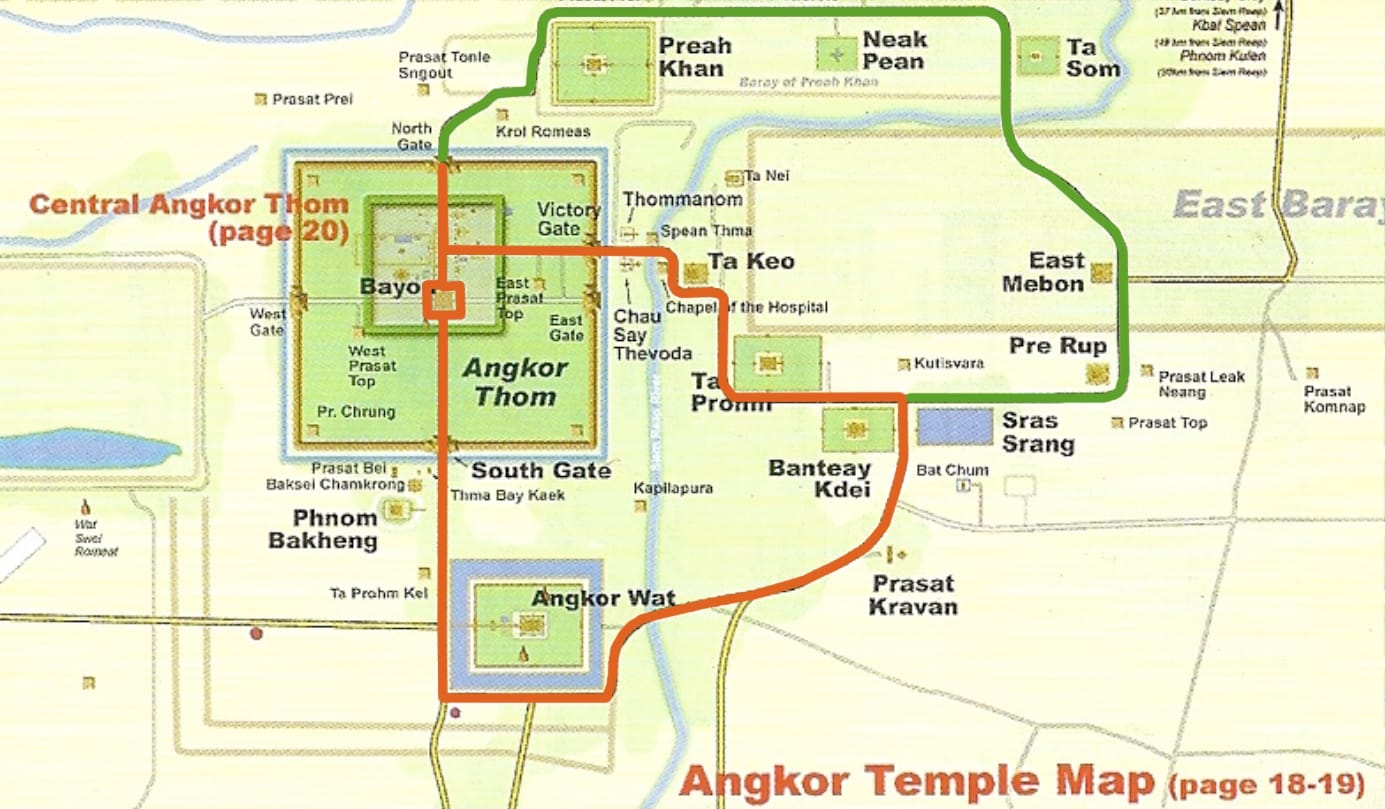
The Perfect Sunrise-to-Sunset Angkor Wat Itinerary
With all these tips for visiting Angkor Wat, we still haven’t gotten to the most important – your itinerary for the day. This guide includes all the best temples to visit, in the order that lets you easily get from one temple to the next and see each one at the best possible time of day. Whether you want to know the best spots to catch the sunrise and sunset or when certain places are quietest, this is the itinerary to follow.
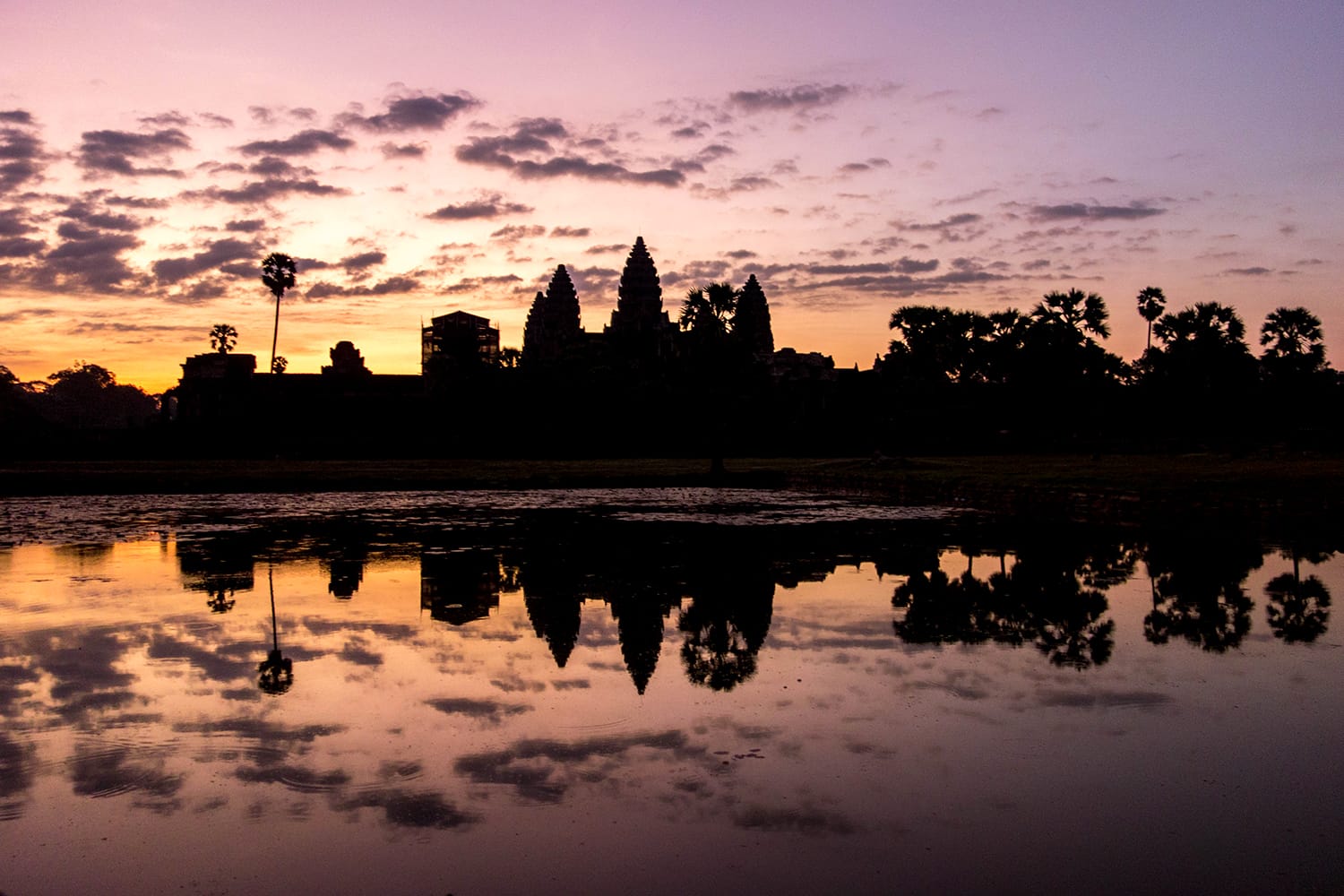
Angkor Wat at Sunrise
There’s really no other place to start your day than at the temple of Angkor Wat itself. Arriving before sunrise, you’ll want to head for the reflecting pool west of the temple. Aim for the northwestern edge of the pond to get the ideal vantage point for watching the sun creep over the temple. Angkor Wat slowly takes shape out of the darkness, its five sanctuary towers soon clearly visible.
There will probably be a fairly large crowd at the pond, so if you want to set up a camera and tripod, arrive right when the gates open at 5 a.m. Then, once the sun has risen and you’re happy with your photos, it’s time to go see Angkor Wat up close.
Following the long sandstone causeway, you’ll veer off into one of the side entrances into the heart of the temple. Inside the walls, you’ll be taken up a series of terraces, each with a gallery around it. These galleries feature large, ornate carvings and bas-reliefs that tell stories from Hindu mythology. At the top is a contemplative terrace with four galleries that lead into the temple’s main tower, which has a shrine to Buddha in the center.
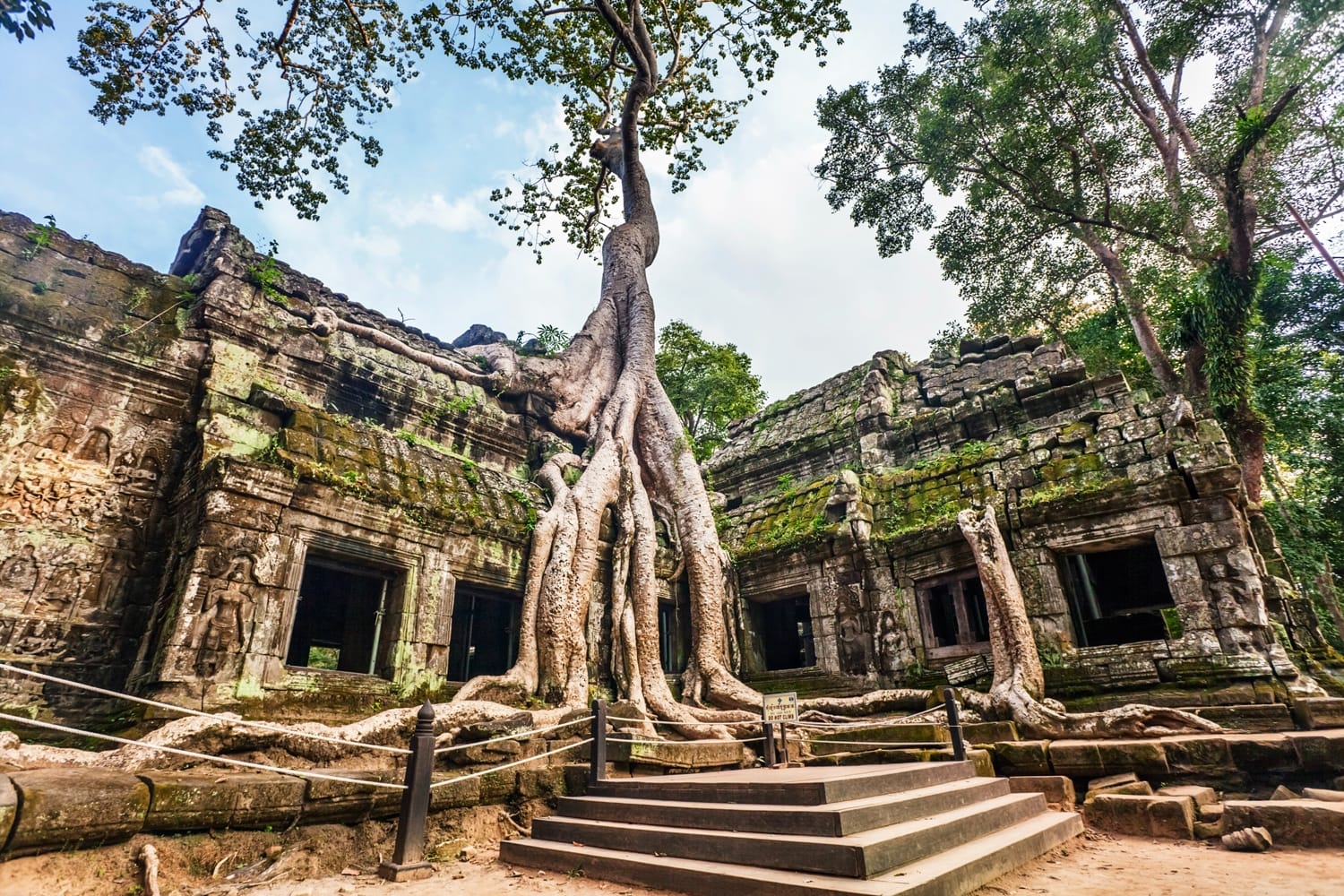
Ta Prohm
The most famous of the temples after Angkor Wat, Ta Prohm is the place many people picture when they think of Angkor. Whether you know it as “the Tomb Raider temple” or “the temple where the trees grow out of the rock,” Ta Prohm is far more impressive than you can imagine from simply looking at photos or watching movies.
You’ll need to trek through quite a bit of jungle just to reach the outer moat of this small temple, which was once a monastery and university. It’s easy to see how the temple could have been lost over the centuries as you venture deeper into the jungle.
Once you reach Ta Prohm, you’ll see how the trees and plants left in place after the temple’s rediscovery have reclaimed the ruins. It’s amazing just how many details of the temple have survived. With a wandering path that takes you through passages and into courtyards, there’s much to take in besides tree roots sprawled around doorways. If you linger at any temple here, it’s likely to be Ta Prohm.
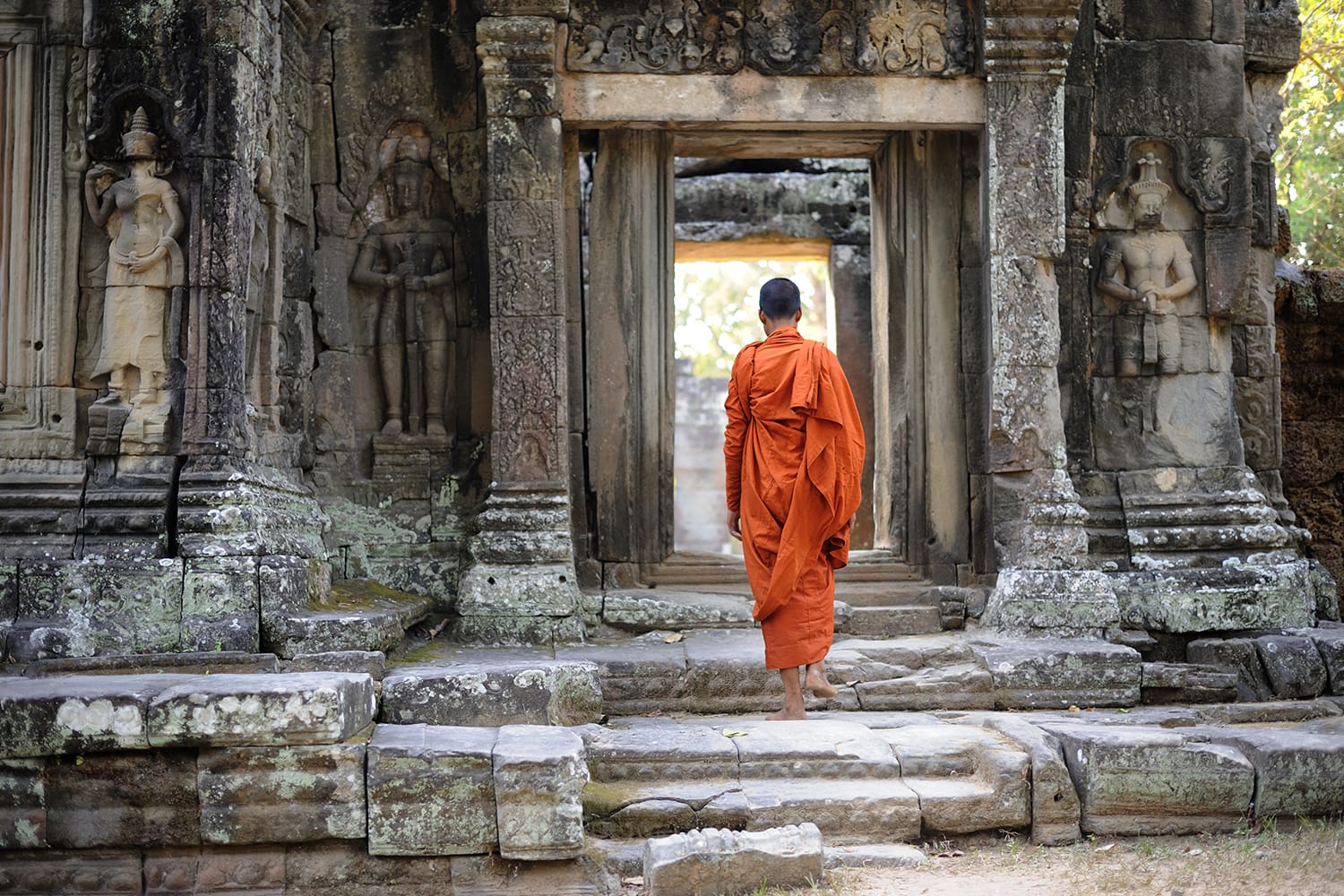
Banteay Kdei
Not far from Ta Prohm, you’ll find Banteay Kdei, one of Angkor’s unrestored temples. Once a Buddhist monastery and temple, Banteay Kdei is similar in many ways to Ta Prohm, though much quieter. You can delve into its maze of chambers to get a sense of what other temples of Angkor must have looked like before the restoration efforts of the last few decades. Much of Banteay Kdei’s charm comes from its disheveled, overgrown appearance.
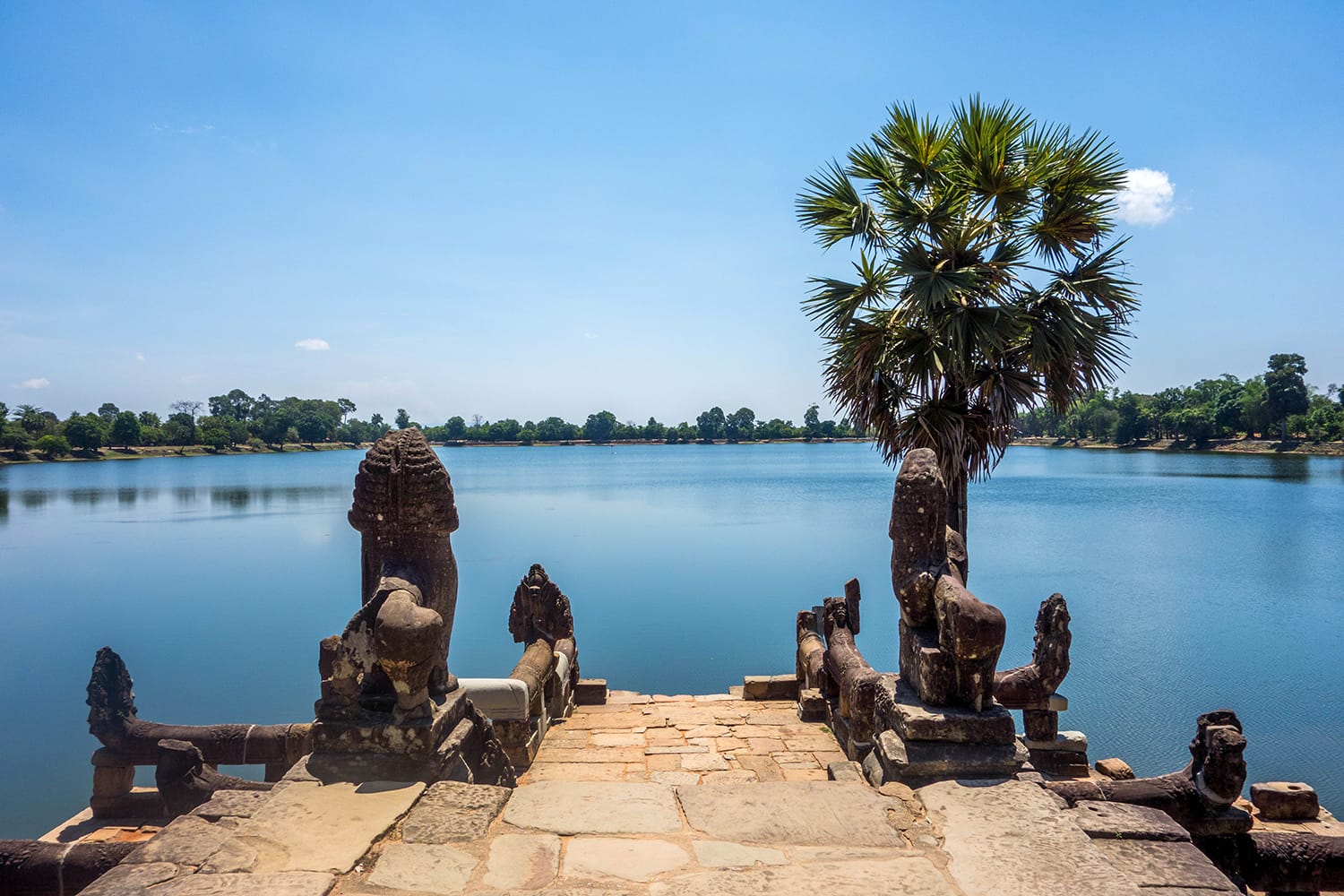
Srah Srang
Just across from Banteay Kdei is Srah Srang. While it’s only a reservoir today, there was probably also some form of temple here when it was built in the 12th century. With a small stone platform and trails around the sides, Srah Srang is a peaceful break from climbing temples and also quite a popular sunrise spot. The platform terrace still features several sculptures, including a pair of nagas (mythical human-serpent hybrids) overlooking a pair of lions on the stairs leading into the water.
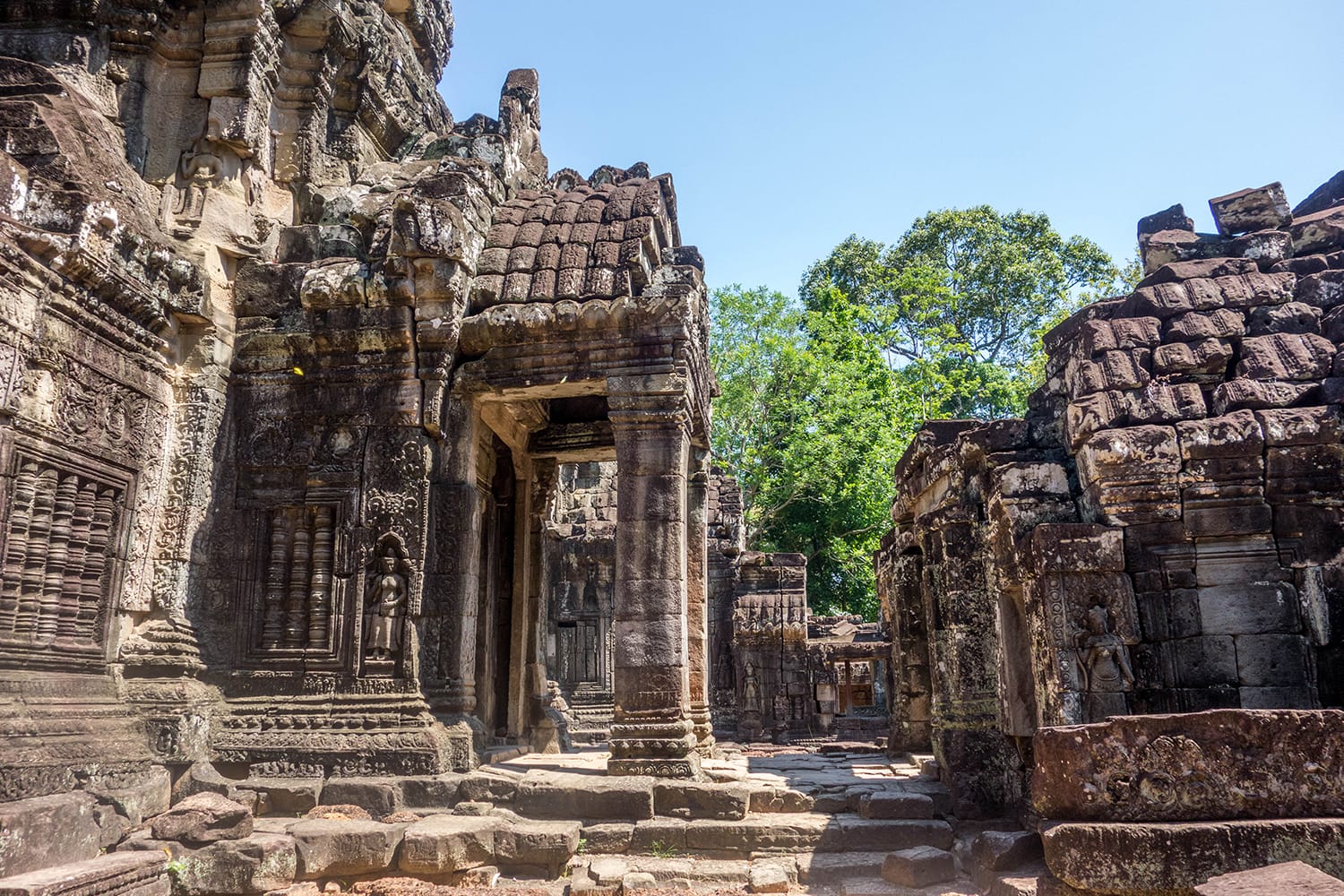
Preah Khan
Off to the north and a little removed from the bustle of Angkor’s other temples, Preah Khan is known for its tranquil nature. Unlike most of the temples, Preah Khan has a flat layout. Entering from the east, you’ll have a huge lake behind you as you cross the moat, while the western entrance is down a secluded leafy path. Past the mossy outer walls of the temple, you’ll go down another path through the jungle until you reach the temple proper.
Inside, Preah Khan is like a maze of ancient corridors with plenty of dead ends. It’s not nearly as restored as some of the other temples, giving you a sense of how time has affected the ruins. Some features remain incredibly clear, though, such as the details of the carvings and the red hue of the worn paint. As with Ta Prohm, you’ll find the occasional tree sprouting from the ruins, but this largely intact two-story building is something else entirely.
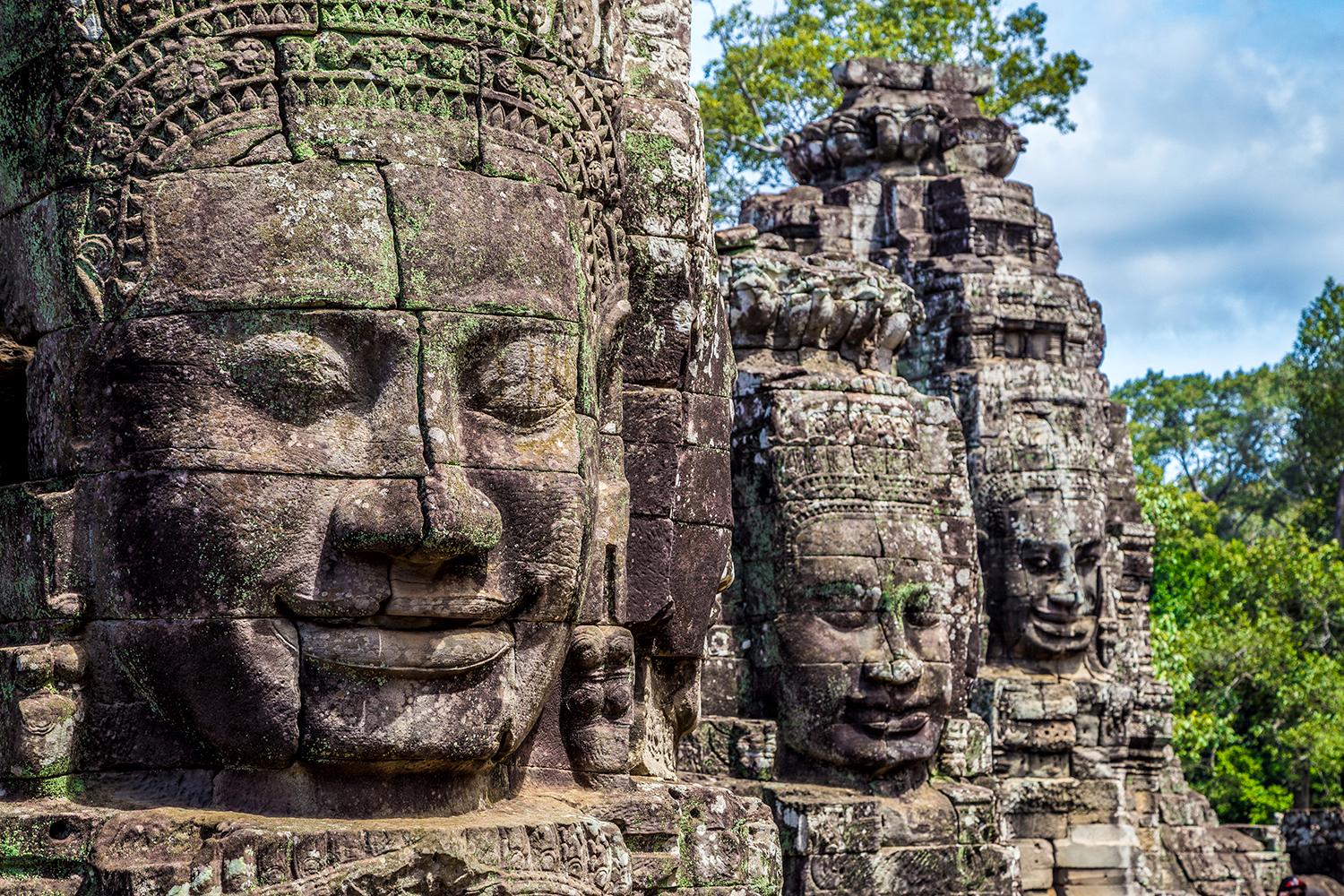
Angkor Thom
It’s only a short ride from Preah Khan to the wide moat that surrounds the ancient city of Angkor Thom. Once the capital of the Khmer Empire, Angkor Thom is home to several striking temples and other assorted ruins. Just crossing into Angkor Thom over the four bridges, each lined with sculptures of gods and demons, and passing under the giant face on each gate is a remarkable experience.
These are the main sights to seek out among the forest roads of Angkor Thom:
- The Bayon, the main temple of Angkor Thom, sits dead center in the ancient city. From the upper terrace, you’ll spot the towers with giant faces on the sides. Scenes and stories from Khmer times are carved into the walls throughout the outer galleries.
- The Baphuon, a temple mountain of three terraces, makes an impression right off the bat with its long, elevated bridge passing reflection pools. This Hindu temple to the god Shiva encountered some problems during restoration, but when you stand at the top, you’ll see the efforts were well worth it.
- In what looks like an ordinary field, you’ll find the Terrace of the Elephants. Measuring 350 meters long, this ornate platform with elephant statues at either end was used in ceremonies and for watching military parades.
- The Terrace of the Leper King is just up the road from the Terrace of the Elephants but noticeably different from its neighbor. This squarish platform features a shrine to the Hindu god Yama on top and beautiful carvings along the sides.
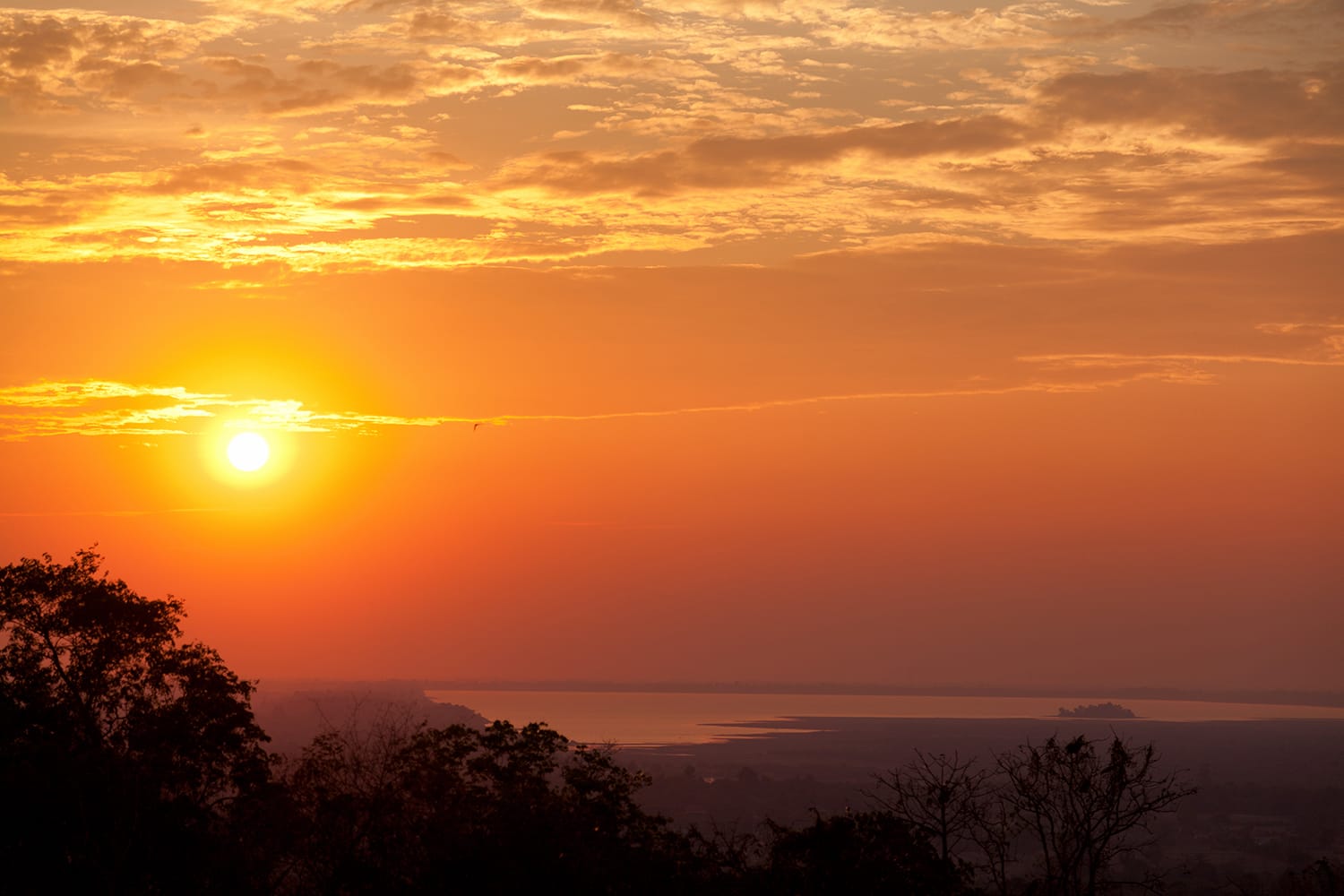
Phnom Bakheng for Sunset
There’s no better place to finish the day and watch the sunset than Phnom Bakheng. From the top of this Hindu temple mountain just south of Angkor Thom, you can admire the colors of the sky and see Angkor Wat change with them.
This is one of the most popular sunset spots in Angkor, so it’s likely to be busy. Once you see the vista from this viewpoint 60 meters off the ground, though, you probably won’t care.
Well, those are our tips for visiting Angkor Wat from sunrise to sunset! Following this itinerary is a fantastic way to experience this incredible place of heritage, history, and beauty in a day.
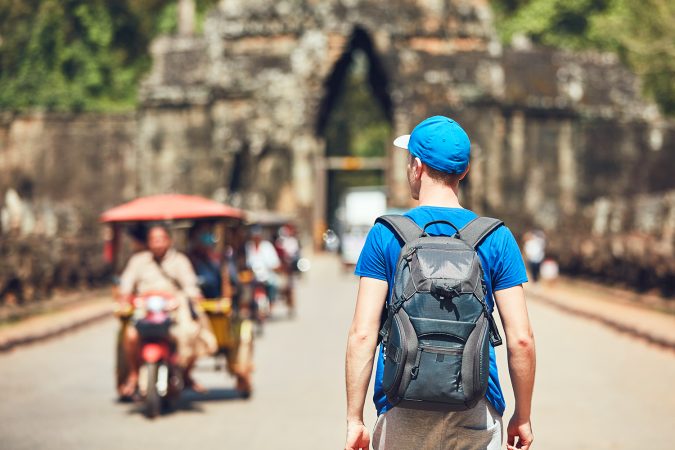
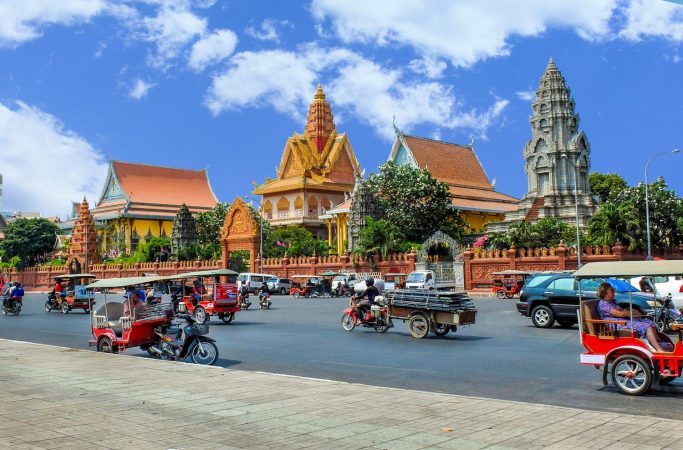
Comments